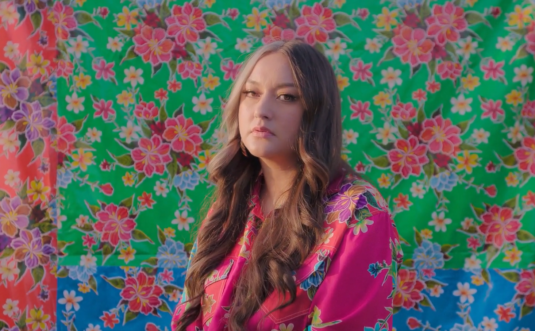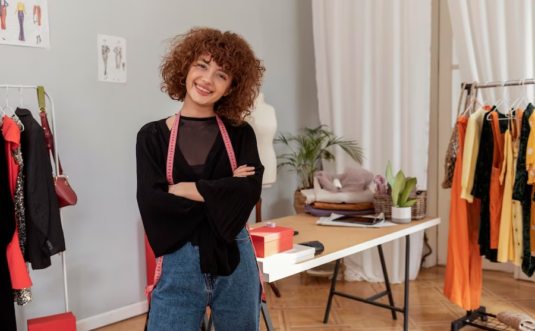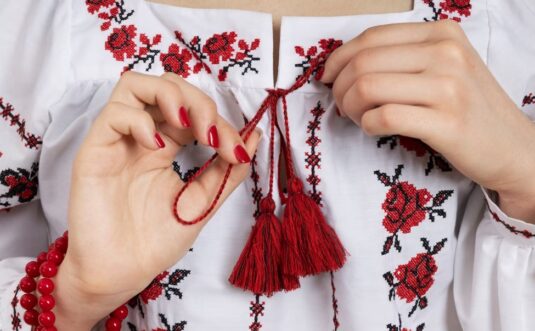Dive into the vibrant world of fashion where hues hold immense power. They stir emotions, communicate messages, and generate aesthetic appeal. From a bold red gown embodying confidence to a serene blue top suggesting tranquility, the color palette significantly influences our perception and interaction with fashion.
In this article, we will unravel the captivating sphere of the theory within fashion, investigating its influence on our sartorial choices and aesthetics.
Grasping Color Theory
A cornerstone of fine arts and design, including style, the theory constitutes the study and application of shades to construct visually attractive arrangements that convey particular messages.
Comprehending the theory allows designers and style enthusiasts to make informed decisions regarding shade palettes, combinations, and placements, leading to more captivating and compelling designs.
The Color Wheel
The color wheel, a pie chart that organizes hues in a logical and systematic method, is made up of primary (red, blue, and yellow), secondary (orange, green, and purple), and tertiary colors (formed by blending primary and secondary options).
| Primary | Secondary | Tertiary |
|---|---|---|
| Red | Orange | Red-Orange |
| Blue | Green | Blue-Green |
| Yellow | Violet | Yellow-Green |
| Yellow-Orange | ||
| Blue-Violet | ||
| Red-Violet |
Serving as a visual tool, the wheel illuminates color relationships and separates into warm (red, orange, and yellow) and cool (blue, green, and purple) categories. Style creators frequently refer to the wheel to select hues that harmonize well together and create aesthetically pleasing amalgamations.
Primary, secondary, and tertiary colors, all contribute to a more versatile palette, providing endless opportunities for originality and creativity.
Harmony and Psychology
Color harmonies are essential in the world of style and design, aiding in the creation of pleasing and balanced visuals. Each harmony imparts a different effect and mood, allowing for inventive and flexible shade combinations.
| Harmony | Description |
|---|---|
| Monochromatic | The use of different shades, tints, and tones of a single color. |
| Analogous | Combining colors that are adjacent to each other on the wheel. |
| Complementary | Pairing colors that are opposite to each other on the wheel. |
| Triadic | Using three colors that are equally spaced from each other on the wheel. |
| Split Complementary | Choosing an option and combining it with the two colors adjacent to its complementary color. |
| Tetradic | Combining two sets of complementary colors on the wheel. |
| Square | Using four colors that are evenly spaced from each other on the wheel. |
Personal Style and Shade Selection
Personal style is a reflection of individuality, a platform to express our uniqueness to the world.
One essential aspect that shapes our style is the choice of hues. They have the capacity to highlight our features, stir emotions, and communicate messages. Comprehending how colors interact with our personalities allows us to select outfits that mirror our true selves.
| Color | Meaning/Association |
|---|---|
| Red | Passion, energy, power, love, excitement, boldness |
| Orange | Creativity, enthusiasm, warmth, determination, optimism |
| Yellow | Happiness, joy, intellect, positivity, energy, cheerfulness |
| Green | Nature, growth, harmony, balance, renewal, freshness |
| Blue | Calmness, serenity, trust, loyalty, stability, peace |
| Purple | Royalty, luxury, spirituality, creativity, wisdom, mystery |
| Pink | Femininity, romance, gentleness, love, compassion |
| Brown | Earthiness, stability, reliability, simplicity, comfort |
| Gray | Neutrality, practicality, maturity, sophistication, subtlety |
| Black | Elegance, power, formality, mystery, strength, authority |
| White | Purity, innocence, cleanliness, simplicity, clarity |
| Gold | Luxury, wealth, success, prosperity, prestige, sophistication |
| Silver | Modernity, elegance, sleekness, sophistication, intelligence |
| Copper | Warmth, earthiness, durability, tradition, grounding |
| Turquoise | Calmness, tranquility, balance, communication, clarity |
Emphasizing Natural Features
Colors can significantly accentuate our natural features, such as skin tone, hair hue, and eye tint. By understanding our unique coloration, we can select shades that align with our features and create a flattering impact.
Trends in Fashion 2023
In 2023, the style industry is experiencing an array of color trends for both the spring/summer and fall/winter seasons. These hues range from joyful, uplifting, and powerful to bold, blending fantasy with reality, integrity, and joy. Pantone’s chosen color for 2023 is Viva Magenta, a deep pinkish-red tone.
Conclusions
Color theory in fashion uncovers a universe of possibilities, enabling us to harness the power of hues to express ourselves, stir emotions, and make striking style decisions. So, the next time you approach your wardrobe, remember the power of colors and exploit the endless possibilities they offer in the world of style.




